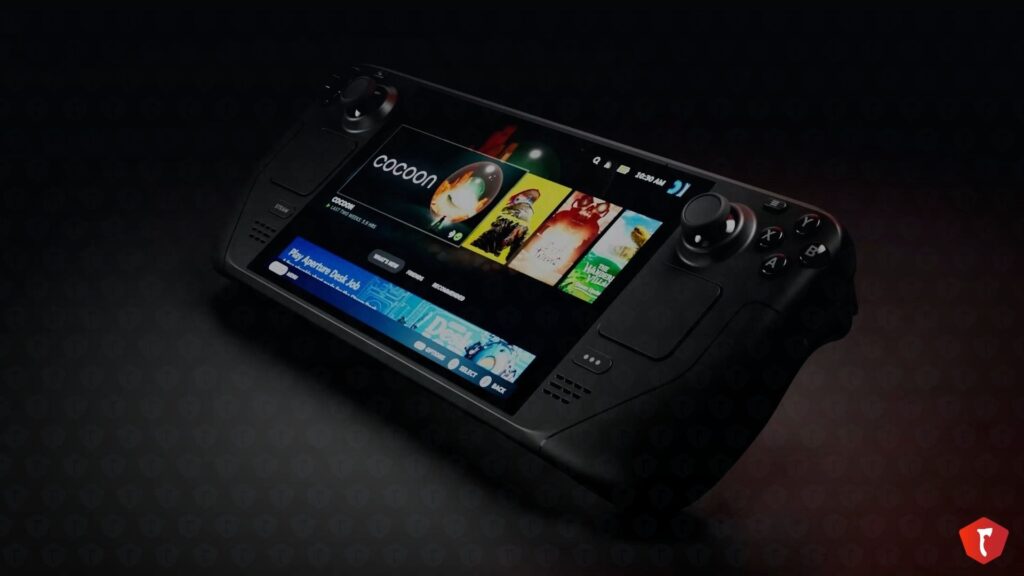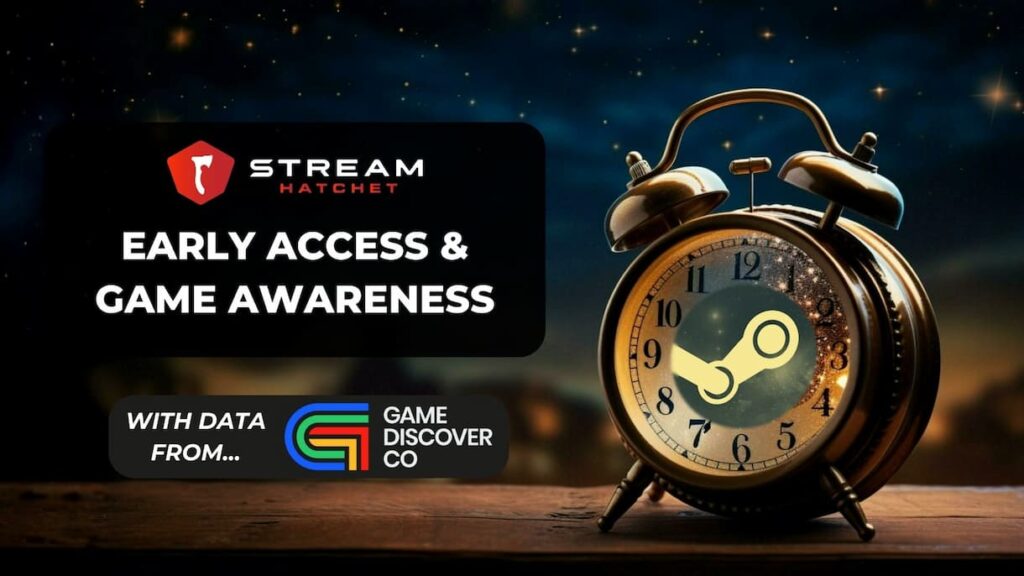When the Steam Deck released back in February of 2022, user expectations were low. The concept of a handheld device with the power of a portable PC seemed doomed to failure. But Valve proceeded with the Linux-powered project, launching the Steam Deck with specs that far outperformed the Nintendo Switch and fixing bugs and hardware issues at a rapid rate over the first year of the device’s release.
Fast forward to 2024, and the Steam Deck is now beloved by tech critics and users alike. The Steam Deck has sold in excess of Valve’s 3M unit benchmark, and 42% of Steam Deck owners say that it’s their main gaming device. Steam’s success with hardware consolidates its dominance in the PC gaming market, with revenue doubling over the past 5 years and the platform’s concurrent user count now exceeding 36M. As a small company of only 360 or so people, some Valve employees now essentially consider themselves a full-fledged hardware company.
In light of the Steam Deck’s success, it’s worth looking at how Steam Deck engagement is translating into online viewership. In this article, we look at the most popular games on Steam Deck over the past 12 months to see the overlap with games that viewers watch on live streaming platforms.
Steam Deck Popularity Doesn’t Necessarily Translate to Live Streaming Demand
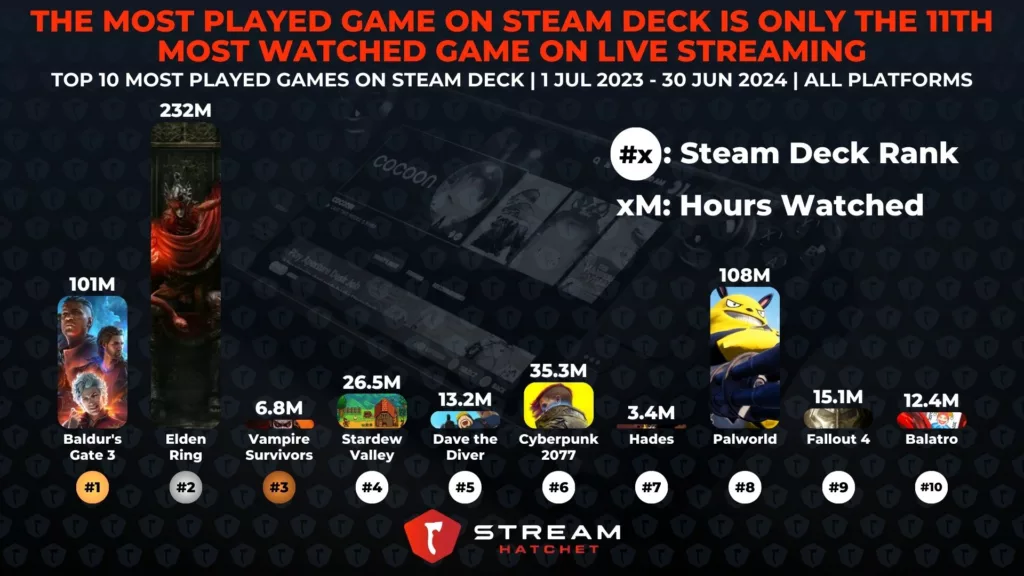
When looking at the top 10 games on Steam Deck, it quickly becomes apparent that popular games on the system are not necessarily also popular on live streaming. The top 10 Steam Deck games over the past 12 months range from live streaming hits like Elden Ring (with 232M hours watched) down to quieter titles like the original Hades (with just 3.4M hours watched). The most played title on Steam Deck, Baldur’s Gate 3, is actually only the 11th most watched game on live-streaming platforms with 101M hours watched. Note that these hours watched totals are calculated over the same time period as Steam Deck popularity.
There are two primary reasons for this discrepancy, one of which presents itself after just a cursory glance over the top 100 Steam Deck games. Most of these games are primarily single player experiences, such as Baldur’s Gate 3, Elden Ring, and Vampire Survivors, and many of others capitalize on compatibility with Sony and Microsoft’s library of titles. Multiplayer games, however, suffer from the Steam Deck’s inability to load games that use anti-cheat software, such as Fortnite, VALORANT, and Rust. As one can imagine, this excludes a lot of the most popular games on live streaming.
Steam Deck Games Represent a Backlog of Users’ Favorite Steam Titles
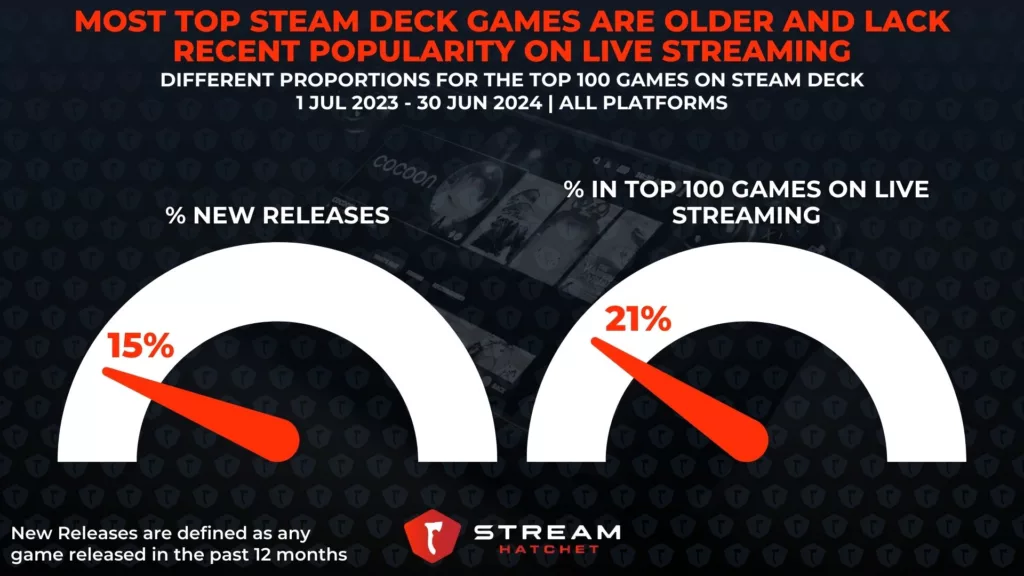
While an incompatibility with certain multiplayer, live-service titles explains part of this discrepancy, there’s another major reason why the top 100 games on Steam Deck appear to have underperformed on live streaming: Just 15 of the top 100 games on Steam Deck have been released in the past 12 months. In other words, players are using the Steam Deck to churn through older titles stockpiled in their backlog of games. This makes a lot of sense: Steam users have an estimated collective $19B worth of unplayed games sitting in their libraries, and the handheld Steam Deck is a fantastic way to chip away at these untouched gems in short bursts of downtime. The popularity of Hades (ranked #7) over Hades II (ranked #14) is a fantastic example of this mentality.
As a side note, this aversion to new releases runs contrary to Steam’s pattern of success as a live streaming platform itself. Back in April, we reported on how most of Steam’s live streaming viewership comes from new releases as publishers leverage the platform’s dual role as game store and live streaming platform to organically transition stream viewers into buyers. The common thread between these two strategies is Valve’s reliance on their close relationship with game developers. Valve’s user experience designer Lawrence Yang notes that many studios optimize their games for Steam Deck performance due to their familiarity with the Steam store.
The result of all this is that just 21 of the top 100 games on Steam Deck also feature in the top 100 games on live streaming over the same 12 month period. This isn’t for lack of demand on the consumer side, however: Valve CEO Gabe Newell disclosed that the most expensive version of the Steam Deck is the most popular. Steam Deck users want to be able to run high-spec games, which mostly includes multiplayer games where reaction time matters.
English, Japanese, and Spanish-speaking Streamers are Playing Steam Deck
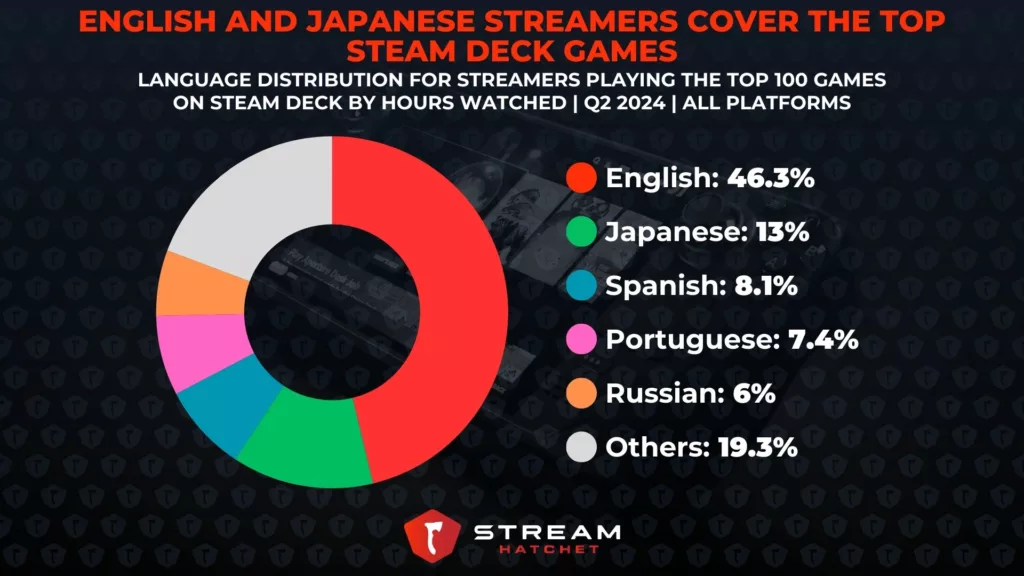
Looking at the streamers covering the top 100 games on Steam Deck, the majority are overwhelmingly English-speaking. 546M hours watched come from English-speaking content creators – roughly 400M more than the next biggest streamer base, Japanese-speaking streamers, at 153M hours watched. So far, it seems like Steam users are still predominantly Western.
This attitude is changing, however. Steam revealed at Nordic Game 2024 that their key growth regions were in Asia and South America. Specifically, Japanese, Indian, Mexican, and Ecuadorian markets (among others) all saw a growth of over 150% over the past 5 years. Mobile games are also generally more popular in Asia, which suggests that the Steam Deck might be better suited to an Asian market. In fact, Simplified Chinese is the second most popular language selected by Steam users. Developers and sponsors would do well to consider the Steam Deck’s potential for reaching into international markets.
Valve has a lot of room for growth when the Steam Deck 2 releases in a few years. At this stage, they suggest the new device will primarily be a performance upgrade with only minor aesthetic changes. Naturally, this performance upgrade also hopes to shut out emerging competitors in the portable PC space like the Asus ROG Ally. If possible, enabling multiplayer games with anti-cheat compatibility on the Steam Deck 2 would also presumably reach new users. Stream Hatchet will be watching for new Steam Deck updates in the near future.
To keep up to date with the biggest games and console news on live streaming platforms, follow Stream Hatchet:
